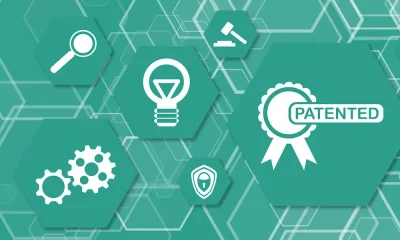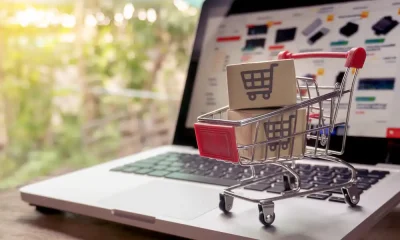Management
Your Fulfillment Strategy Needs a Lift. These 6 Things Can Help
Multichannel fulfillment is difficult for even the best-organized eCommerce enterprises. With so much riding on the ability to scale, small companies must look anywhere they can for a competitive advantage. When it comes to fulfilling orders, you have a lot on your plate. In addition to shipping orders, you also need to manage customer queries, answer emails, and deal with issues. This can feel like a lot, but it doesn’t have to be overwhelming. Here are six tips that can help transform your fulfillment activities and help you get more done in less time.
Consider our recommendations as instruction on consistently delivering a satisfactory service to your customers. Adopt all of these tips, and you may find your business is in a robust position to increase market share. What more motivation do you need? Let’s commence with a recap on eCommerce fulfillment.
What is eCommerce Fulfillment?
By definition, eCommerce fulfillment is customer orders’ shipping and delivery process. Your online business manages the front end i.e the product sourcing, marketing, website display payment (probably using a third-party payment gateway), and customer service and eCommerce fulfillment businesses are responsible for getting the order to the customer’s doorstep quickly and often it’s a ‘same-day’ service.
This is a competitive sector due to the popularity of drop shipping however, did you know drop shipping and eCommerce fulfillment services differ? They are not the same. With eCommerce fulfillment, your business purchases the inventory, stores it, and ships it to the customer.
In contrast, with dropshipping, the customer purchases the product directly from the supplier, and the orders are sent from the supplier, not your fulfillment provider. Now that’s clear, let’s resume with our six tips for tweaking your delivery process.
1. A Comprehensive Just-in-Time Fulfillment Plan
Just-in-time inventory is the gold standard for selling at any scale. Whether you own manufacturing, farm production out to a third party or serve as a third-party retailer or dealer for products manufactured elsewhere, your inventory footprint must be as lean as possible.
For that, your company needs sophisticated forecasting capabilities that map past demand patterns onto current sales and projected future trends to ensure you keep the bare minimum counts on hand. You can’t afford to keep excess inventory on hand for a sale that takes months to arrive; space wasted is money wasted, after all.
2. Small-Run Manufacturing Capabilities
Suppose you manufacture your own custom or limited-edition products or handle white-label production for clients. In that case, you need a robust small-run manufacturing capability to quickly turn around the precise product configurations your customers demand. Look to a 3D printing partner with a full range of additive manufacturing services for limited runs and custom builds.
3. Rapid Prototyping Capabilities
Even if you’re not in the custom or limited-run manufacturing business, your lean, mean fulfillment apparatus demands tight time-to-market, especially in competitive niches characterized by rapidly changing states of the art. Many 3D printing firms with small-run manufacturing capabilities also offer pre-market services – reducing the time needed to move from ideation to prototype and back.
4. Sophisticated Front-End Ordering Interface
Your customers need to feel confident that your fulfillment apparatus will work, especially the parts they can’t see. You need a sophisticated front-end ordering interface with real-time shipment tracking. Simply tossing off a tracking number at the end of a confirmation email doesn’t exactly inspire confidence.
5. A Trustworthy 3PL Partner
If you can’t manage your fulfillment needs on your own, work with a third-party logistics (3PL) partner that knows your business almost as well as you do. Read up on best practices for finding the right 3PL partner, solicit bids, and dive in.
6. Lots of Touches Along the Way
Last, but not least: keep your customers happy with lots of touches throughout (and on either side of) the delivery process. This might be customer relationship management 101, but you’d be surprised how easy it is to lose the forest for the trees.
Continuous Improvement Comes to Fulfillment
You’re probably aware of Toyota’s famous (at least, in business theory circles) policy of “continuous improvement.” Known as kaizen in the original Japanese and touted as part of the broader Toyota Way, the policy was central to Toyota’s transformation from a regional manufacturer of uneven-quality small engine craft to the global automotive powerhouse.
If you have yet to implement a comparable policy of continuous improvement at your company, perhaps now’s the time to think about doing so.
What’s Next?
Over the past few years, many companies have realized that their current fulfillment processes are inefficient and not fully delivering on their customer experience promises. The result is an increasing demand for better, faster, and more reliable fulfillment services.
Fulfillment automation
But many companies have focused on their future fulfillment requirements instead of focusing on what’s wrong with their current processes. This has led to an increased focus on what is often referred to as “fulfillment automation”. The concept of fulfillment automation involves using technology to improve the efficiency and effectiveness of your current operations. This will be the topic of our next business blog article on multichannel fulfillment.
In the meantime, you can always look to these six tips – and any others you pick up in your business journey – to improve your fulfillment apparatus and move closer toward that elusive goal: delighting every customer every time.









